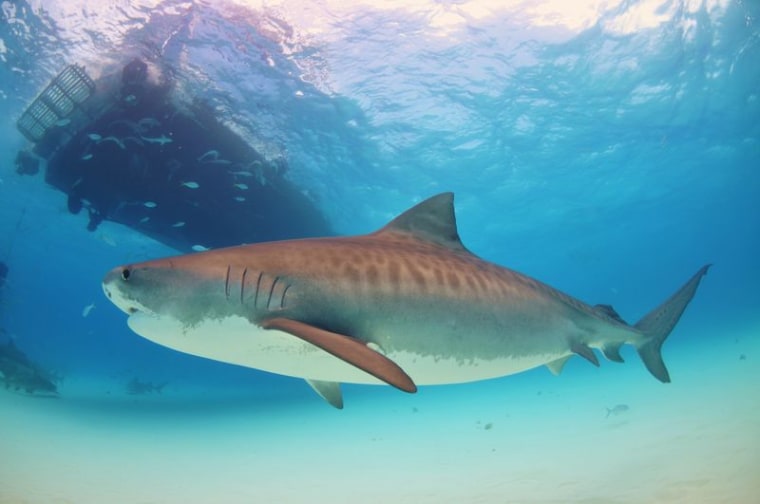At least two species of sharks travel direct routes to targeted locations that are up to 31 miles away, according to a new study published in the Journal of Animal Ecology.
Tiger sharks and thresher sharks have the ability, researchers found. Keep in mind that these sharks are traveling across the open ocean, often at night.
Lead author Yannis Papastamatiou of the Florida Museum of Natural History said in a Wiley Blackwell press release, "Our research shows that, at times, tiger sharks and thresher sharks don't swim randomly but swim to specific locations. Simply put, they know where they are going."
Blacktip reef sharks appear to be a bit more navigationally challenged. Re-analysis of tracking data determined they swim in a pattern known as a "random walk." Basically, they're all over the place, and it's anyone's guess where they will swim to next.
The other studied sharks instead use what scientists call "directed walks," meaning clearcut movements to known goals.
Advanced age in this case has its perks.
"We were surprised at the difference between juvenile and adult thresher sharks," Papastamatiou said. "Adult thresher sharks swam using more directed walks and could do this over greater distances than juveniles. We are not sure why this is, but we believe it shows that adults have learned to navigate more effectively than juveniles, or have developed better mental maps of the area they live in."
Recently you might have read about how sea turtles use magnetic maps to navigate the oceans. My guess is that the efficient shark travelers are utilizing a similar system.
The discovery adds to the already impressive list of sensory feats achieved by sharks. They have good hearing, vision and smell. They can detect certain chemicals at very low concentrations and low frequency sounds at least 1,000 feet away.
As for the swimming on target ability, tiger sharks seem to be particularly talented.
Papastamatiou explained, "Many people could walk to a known destination 6 to 8 kilometers (4 to 5 miles) away, but imagine doing it in deep water and at night. As anyone who dives knows, finding your way around underwater without a compass is very difficult, but this is what we found tiger sharks could do."
Such research, according to the scientists, will ultimately help improve predictions of how changes in habitat or fishing will affect shark populations.
